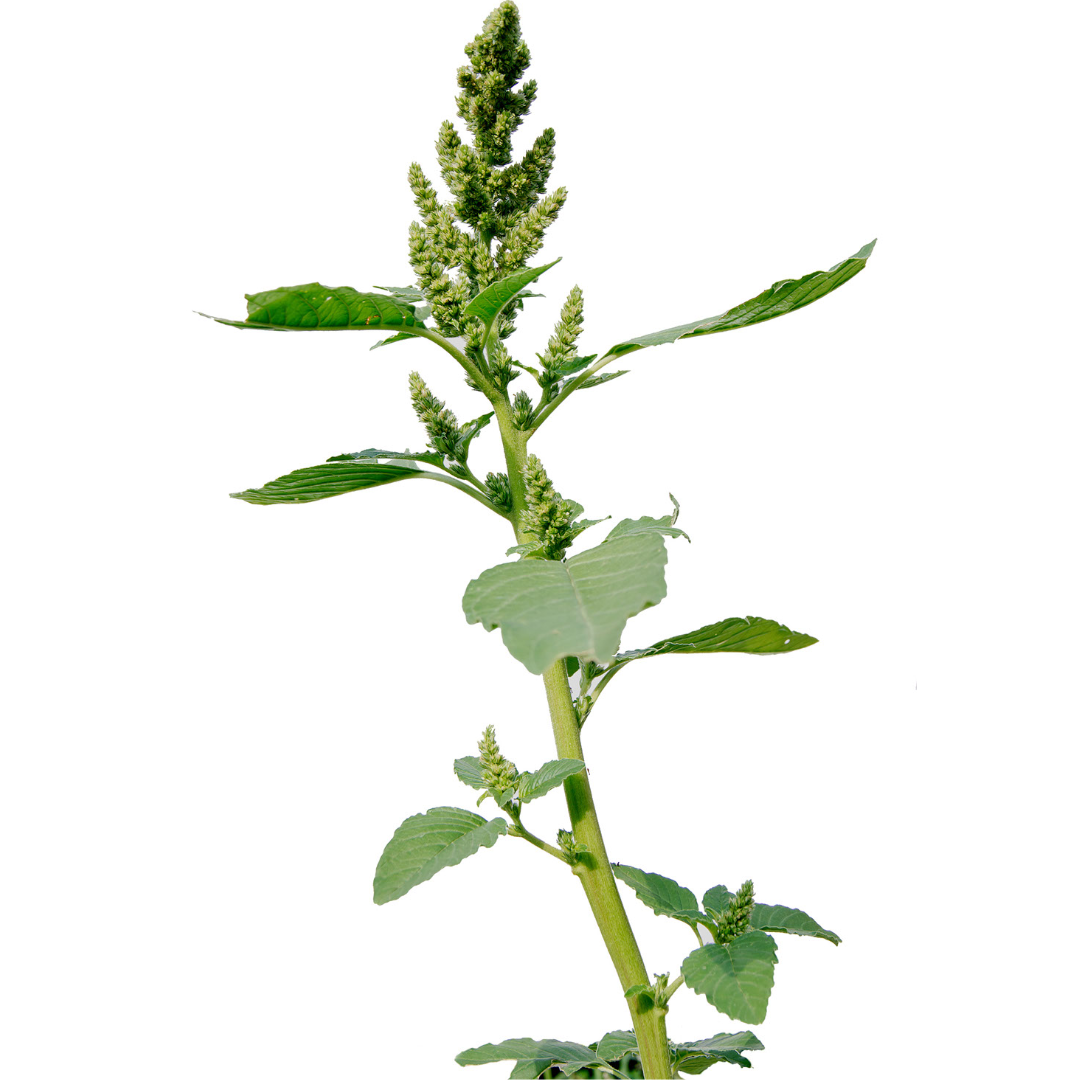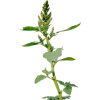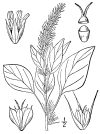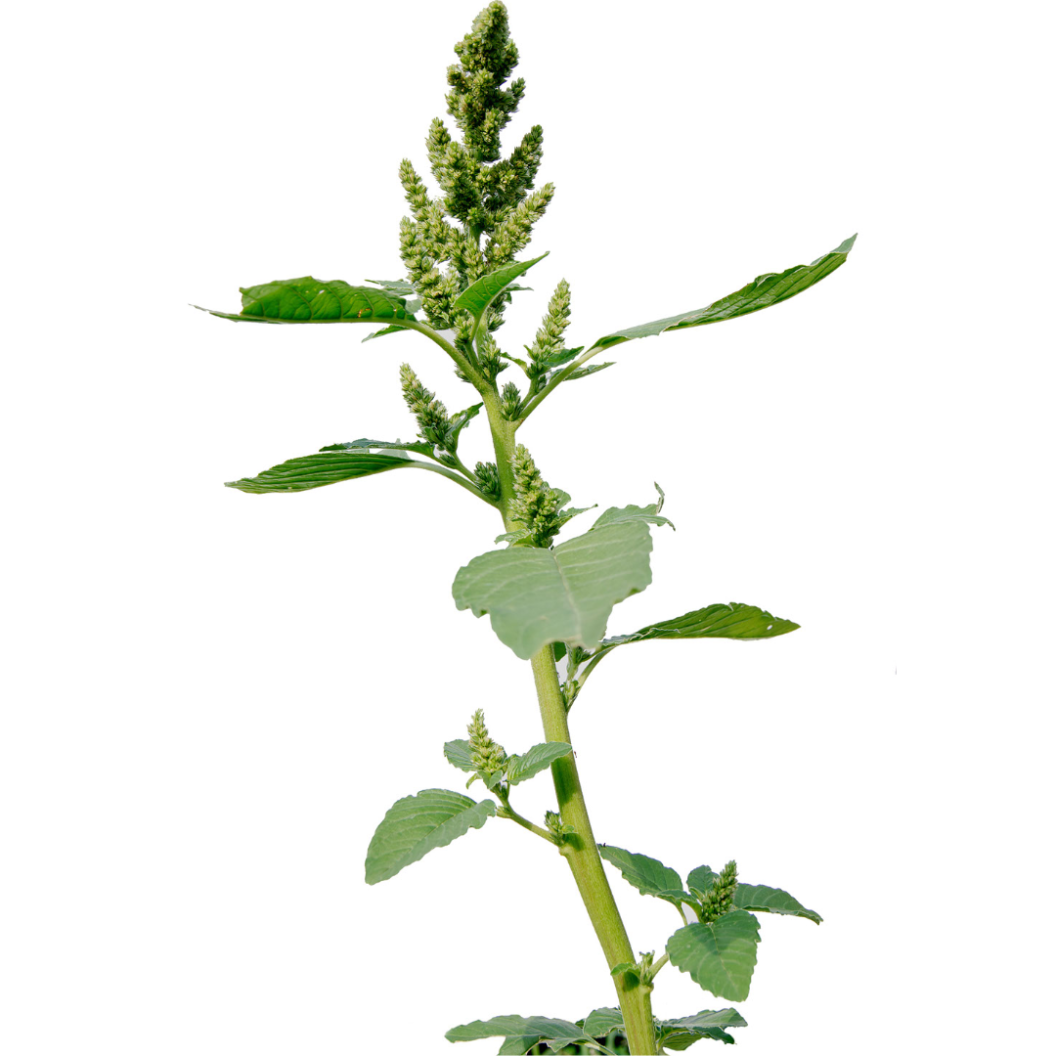



Pigweed
DESCRIPTION: Pigweed is a common name for several species of annual plants. The most common species in the United States is Amaranthus palmeri. They are extremely problematic due to their ability to spread rapidly. It is a highly competitive plant, and can grow up to 10 feet tall, producing thousands of small seeds per plant. It is also known for its resistance to multiple herbicides, making it difficult to control. The spread of this weed has become a major concern for farmers, as it can cause significan yield losses in crops such as cotton, soybeans, and corn.
SCIENTIFIC NAME: Amaranthus palmeri
OTHER NAMES: Palmer's Amaranth, Palmer Pigweed, Careless Weed, Dioecious Amaranth, and Palmer's Pigweed
LEAF TYPE: Broadleaf
FLOWERS: The flowers of the pigweed are small, green, and inconspicuous. They grow in long, upright clusters at the top of the plant and are not particularly showy or colorful. The clusters can be several inches long and can produce thousands of tiny seeds per plant. Their prolific seed production is what makes them a major concern for farmers and gardeners alike.
LEAVES: Pigweed leaves are broad leaves that can vary in shape and size, but are generally long and narrow with pointed tips. The leaves can be green or reddish in color and have a slightly rough texture. The edges of the leaves can be smooth or slightly toothed, depending on the variety. The leaves grow alternately along the stem and are spaced relatively far apart. When the plant is young, the leaves are small and often form a rosette at the base of the plant, while older plants have larger leaves that grow up the stem. The leaves are fairly nondescript and can be difficult to distinguish from other types of weed species.
LIFE CYCLE: Annual
HOW TO IDENTIFY: The easiest way to identify pigweed is to look at its general characteristics as a whole, rather than specific features. The plant will be tall (up to 7 feet) and have a long, slender stem with alternating broad leaves. The elaves are generally long and narrow with pointed tips, and can be green or reddish in color. Atop the stems will be upright clusters of small, green flowers that can be several inches long. The stem will typically be hairless. It also features a deep taproot making it difficult to pul out of the ground. If you have multiple plants that meet this description it may be wise to pull one and verify that it has a long taproot.
MECHANICAL CONTROL RECOMMENDATIONS:
1. Mowing - More Info
2. Tillage - More Info
3. Flaming - More Info
4. Mulching - More Info
5. Mechanical Weeders - More Info
CHEMISTRY RECOMMENDATIONS:
Pre-emergent herbicides:
Fomesafen: This herbicide is a PPO inhibitor and can provide some control of Palmer amaranth. It's often used in combination with other herbicides for better efficacy.
Atrazine: Atrazine is a commonly used pre-emergent herbicide that can help manage Palmer amaranth. However, resistance to atrazine has been reported in some populations.
Pyroxasulfone: Pyroxasulfone is a microtubule inhibitor that can provide pre-emergent control of Palmer amaranth. It's often used in herbicide mixtures.
While not a traditional pre-emergent herbicide, mesotrione (an HPPD inhibitor) can provide some early-season control of Palmer amaranth when used in combination with other herbicides.
Post-emergent herbicides:
Glufosinate is a non-selective herbicide that can provide control of Palmer amaranth, especially in crops that are tolerant to glufosinate, such as Liberty Link crops. It's important to ensure that the crop you're treating is tolerant to glufosinate before using this herbicide.
Lactofen is a PPO inhibitor that can be effective against Palmer amaranth at early growth stages. It's often used in combination with other herbicides for broader control.
2,4-D: 2,4-D is a synthetic auxin herbicide that can provide some control of Palmer amaranth, especially at early growth stages. It's often used in tank mixes with other herbicides for better efficacy.
In addition to its pre-emergent use, lactofen can also be used post-emergently for Palmer amaranth control, particularly at smaller growth stages.
In some cases, atrazine can provide post-emergent control of susceptible Palmer amaranth populations. However, resistance to atrazine has been reported in many areas.
Mesotrione is an HPPD inhibitor that can provide some control of Palmer amaranth at early growth stages. It's often used in combination with other herbicides.
Selective herbicides:
Mesotrione is an HPPD inhibitor that can provide selective control of Palmer amaranth, particularly when used at early growth stages. It's often used in combination with other herbicides.
Fomesafen is a PPO inhibitor that can offer selective control of Palmer amaranth. It's often used as part of a tank mix for better efficacy.
While not exclusively targeting Palmer amaranth, dimethenamid-P is an ALS inhibitor that can provide some selective control in certain crops. It's often used for pre-emergent control.
Atrazine is a photosystem II inhibitor that can offer selective control of Palmer amaranth in certain crops. However, resistance to atrazine has been reported in many areas.
While not as effective due to resistance issues, glyphosate can provide selective control of Palmer amaranth in crops that are genetically modified to be glyphosate-tolerant.
Non-Selective herbicides:
Glyphosate is one of the most widely used non-selective herbicides. It's effective against many weed species, including Palmer amaranth. However, resistance to glyphosate is a significant issue in some areas.
Glufosinate is another non-selective herbicide that can be effective against Palmer amaranth. It's used in crops that are tolerant to glufosinate, such as Liberty Link crops.
Paraquat is a fast-acting non-selective herbicide that can provide quick control of Palmer amaranth. It's often used for burndown or desiccation purposes.
Diquat is similar to paraquat in its non-selective action. It's used for burndown of weeds before planting or for non-crop areas.
Pelargonic acid-based herbicides work by disrupting cell membranes and causing desiccation. They can provide non-selective control of many weed species, including Palmer amaranth.
Recommended Prevention
Recommended Control

